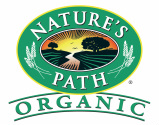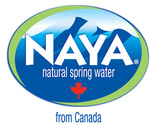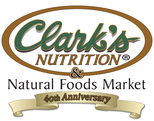|
|
|
|
I got this articles from ORALMD . And I want to share it with you.
6 HIDDEN DANGERS IN TOOTHPASE A Must Read if You Have Children Would you allow your family to brush their teeth with engine degreaser or rat poison? The fact is, they probably are and you don’t even know it. Dental hygiene products that you and your loved ones use every day may contain toxins that have been linked to cancer, blindness, and even death. Have you checked out the ingredients in your toothpaste or mouthwash lately? You will be shocked at what you find. Many name-brand toothpastes and mouthwashes contain potentially harmful ingredients, which are made up of very small molecules that may penetrate through the tissue of your mouth and enter the blood stream, building up in the liver, kidneys, heart, lungs, and tissues. Did you ever wonder why manufacturers are required to put a warning label on toothpastes? Just read the label on any major brand toothpaste or mouthwash. You'll see they are loaded with dangerous toxins and chemicals such as sodium fluoride, triclosan, FD&C Blue Dye #1 and 2, sodium lauryl sulfate, and hydrated silica. All of these common ingredients have been found to be harmful to humans. (From the Safe Shoppers Bible) 1. Sodium Fluoride: Rat poison, in a tube. Sodium fluoride, one of the main ingredients in rat poison, can also be found in toothpaste. You are probably aware that most toothpaste and a large number of mouth rinses contain fluoride because that's what dentists have recommended for years to prevent cavities. What you probably aren’t aware of is four ounces of many popular toothpastes contain enough fluoride to kill a small child within two to four hours (From "Fluoride Retained From Mouth Rinses and Dentifrices in Preschool Children.") In children, minimal ingestion of sodium fluoride causes salivation, nausea, vomiting, epigastric pain, and diarrhea. Larger doses of the carcinogen may cause paralysis, muscular weakness and colonic convulsions, followed by respiratory and cardiac failure. (From “Commercial Toothpaste - Natural or Poison?”) If the fact that sodium fluoride is found in rat poison isn’t enough to make you think twice, consider this. Sodium fluoride is a key component of anesthetic, hypnotic drugs, psychiatric drugs and even sarin nerve gas. (From "Neurotoxicity of Sodium Fluoride in Rats.) Want some more fun facts about fluoride? Fluoride compounds were added to the drinking water of prisoners to keep them quiet and to hamper noncompliance with authority, both in Nazi prison camps during World War II and in the Soviet gulags in Siberia. (From The Cold War and the University) Surprisingly, fluoride has NEVER been approved by the Food and Drug Administration (FDA). Additionally, a 1990 study stated that fluoride has been shown to NOT reduce cavities. In fact, scientists are now linking fluoride to dental deformity, arthritis and allergic reactions. Additionally, scientists are claiming that the use of sodium fluoride could be linked to approximately 10,000 unnecessary deaths each year from cancer. (From “Fluoride an equivocal carcinogen. National Cancer Institute) 2. FD&C Blue Dye # 1 & 2: Are you eating crude oil for breakfast? These dyes are artificial colorings often found in familiar toothpaste brands and a wide variety of other products. Recent studies indicate that FD & C Blue Dyes 1 & 2 can trigger a wide number of behavioral, learning, and health problems. FD&C color dyes may also potentially cause severe allergic reactions, asthma attacks, headaches, nausea, fatigue, nervousness, lack of concentration, and cancer. (From “Formation of carcinogenic aromatic amine from an azo dye by human skin bacteria in vitro” & “Skin discoloration with blue food coloring”) Using FD & C Blue Dyes 1 & 2 is just like ingesting crude oil as it too, is synthesized from petroleum. These dyes were originally made from coal tar oil, which is a black, sticky tar by-product of steel making and petroleum distillation. Crude oil is a source of numerous complex chemicals. Through repeated human exposure, some of these isolated coal tar components were classified as active carcinogens, ultimately leading to government regulations and restrictions. Today, coal tar dyes are synthetically engineered rather than extracted from actual coal tar, which greatly reduces the possibility of being contaminated with carcinogenic residuals from the coal itself. However, the dyes still contain carcinogenic properties. Over several decades of use, some of these synthetic dyes have come under greater scientific and government scrutiny due to their carcinogenic and mutagenic activity. Because of this, they are still referred to in the industry as “coal tar dyes,” according to the FDA. (From U.S. Food & Drug Administration. “Color Additives Fact Sheet.”) Even if toothpaste is never swallowed, these dyes can be absorbed within seconds through the skin on the lips, or through the mucous membrane in the mouth. According to the Physician's Desk Reference, the mucosal lining inside of the mouth has an absorption efficiency of over 90 percent. Because of this, these carcinogens get into your blood, your brain, and your cells in no time at all – especially when you consider most people use dental care products 2 to 3 times a day. (From U.S. Food & Drug Administration. “Color Additives Fact Sheet.”) 3. Sodium Lauryl Sulfate (SLS): Used clinically to irritate skin Perhaps the most dangerous ingredient in personal-care products is Sodium Lauryl Sulfate (SLS). Because SLS has a foaming property, it is added to toothpastes in order to generate foam; giving the impression that the toothpaste is working. However, SLS has been found to be quite corrosive and harmful to skin tissue says a report by the American College of Toxicity. In the cleaning industry, SLS is used in products such as garage floor cleaners, engine degreasers and car wash soaps. Elsewhere, SLS is used for clinical testing as a primary skin irritant. Laboratories use it to irritate skin on test animals and humans so that they may then test healing agents to see how effective they are on the irritated skin. The journal of the American College of Toxicology reports that SLS can penetrate and be retained in the eye, brain, heart, and liver with potentially harmful long- term effects. Also found in most shampoos --including "no tears" baby shampoos--SLS can keep children's eyes from developing properly, can cause cataracts in adults, can delay healing at any age and impair the growth of hair. 4. Triclosan: A pesticide found in many types of toothpaste Triclosan, a chemical used for its antibacterial properties, is an ingredient found in numerous detergents and toothpastes. However, the formulation and structure of this ingredient are similar to some of the most toxic chemicals on earth. Because of this fact, triclosan has been scrutinized in regards to human health and safety, according to Tufts University School of Medicine. While the companies that manufacture products containing triclosan claim that it is safe, the United States Environmental Protection Agency (EPA) has registered it as a dangerous pesticide. The EPA gives triclosan high scores both as a human health risk and as an environmental risk, yet it is found in the toothpastes that you use multiple times a day. Triclosan is a chlorophenol, which is a class of chemicals that is suspected of causing cancer in humans. Externally, phenol can cause a variety of skin irritations, but since it can temporarily deactivate sensory nerve endings, contact with it may cause little or no pain. Taken internally, even in small amounts, phenol can lead to cold sweats, circulatory collapse, convulsions, coma and death. Additionally, chlorinated hydrocarbon pesticides can be stored in body fat, sometimes accumulating to toxic levels. Long term exposure to repeated use of many pesticide products can damage the liver, kidneys, heart and lungs. It can also suppress the immune system, cause hormonal disruption, paralysis, sterility and brain hemorrhages. (From . “Recognition and Management of Pesticide Poisonings.” Environmental Protection Agency) 5. Hydrated Silica: A whitener that damages tooth enamel Hydrated silica, which is primarily used as an abrasive in toothpaste, is made from a crystallized compound found in quartz, sand, and flint. (From “The Safe Shopper’s Bible”) Tooth enamel re-mineralizes daily from the supply of ionic calcium and phosphorus in the saliva. Scratching the surface of the tooth with an abrasive such as hydrated silica harms the enamel and prevents re- mineralization, much like using sand to clean glass. Severe wear could eventually occur. ”The public is cautioned against excessive use of products containing 'dioforms,' which are abrasive substances that can cause the breakdown of tooth enamel. Products containing the ingredients silica and cellulose, in particular, should be avoided when gum disease, tooth decay, sensitivity and receding gums are present. While these ingredients can remove tartar and make teeth whiter in appearance, they also may do harm to dental health by altering the acidic balance of the mouth, gums and tongue,” said Dr. Warren Scherer, New York University College of Dentistry, as reported by The Naples Daily News. 6. Tetrasodium Pyrophosphate: strongly implicated as the causative factor in certain hypersensitivity reactions. Sodium pyrophosphate--also called tetrasodium pyrophosphate or tetrasodium phosphate--is a slightly toxic and mildly irritating colorless transparent crystalline chemical compound with the formula Na4P2O7 and CAS number 7722-88-5. Tetrasodium Pyrophosphate can be a colorless or white crystalline powder that is often used as a pH buffer and emulsifier. Tetrasodium Pyrophosphate promotes the binding of protein and water as well as the binding of soy particles. It is also a source of the nutrient phosphorus. Tetrasodium Pyrophosphate has many uses, such as thickening pudding, and can be found in toothpaste as it removes calcium and magnesium from saliva to prevent their depositing on teeth. In toothpaste and dental floss, sodium pyrophosphate acts as a tartar control agent, serving to remove calcium and magnesium from saliva and thus preventing them from being deposited on teeth. Sounds great right? Consider this: exposure to tetrasodium pyrophosphate causes irritation in humans. It is an alkaline chemical and acute exposures have resulted in mild to moderate irritation of the eyes, skin, nose, throat, and respiratory passages. Tetrasodium pyrophosphate in a dentifrice forms a slightly alkaline solution upon oral use which could irritate oral membranes. Second, increased concentrations of flavoring agents, known to be sensitizers, are needed to mask the strong bitter taste of pyrophosphates Many of the chemical based personal products we use just like in shampoo can be absorbed directly into the blood stream, by-passing the entire digestive system. Some of these synthetic ingredients pass through the body and leave it but others are not so kind. They are deposited in certain glands and organs and accumulate there. For example an independent scientist reported in his research findings that Tetrasodium Pyrophosphate, which is an abundant ingredient in most toothpaste, absorbs through the skin and can accumulate in the eyes causing cataracts. Acute exposure to tetrasodium pyrophosphate may cause mild to moderate irritation of the eyes, skin, nose, throat, and respiratory passages. No signs or symptoms of chronic exposure to tetrasodium pyrophosphate have been reported in humans. Symptoms may include nausea, vomiting and diarrhea. Phosphates are slowly and incompletely absorbed when ingested, and seldom result in systemic effects. Such effects, however, have occurred. Symptoms may include vomiting, lethargy, diarrhea, blood chemistry effects, heart disturbances and central nervous system effects. The toxicity of phosphates is due to their ability to sequester calcium. Chronic ingestion or inhalation may induce systemic phosphorous poisoning. Liver damage, kidney damage, jaw/tooth abnormalities, blood disorders and cardiovascular effects can result. Dangers in Toothpaste can lead to very serious consequences, including the disconnection of gum tissue from teeth, and even tooth breakage and tooth loss. There are many simple ways of fighting gum disease but the most effective is seriously diligent oral care using an effective dental care product. Health risks from chemicals and toxins in oral hygiene products are the most avoidable of all the health risks we face. You don't have to be a biochemist to get these risks out of your life. It's as simple as changing brands. |






